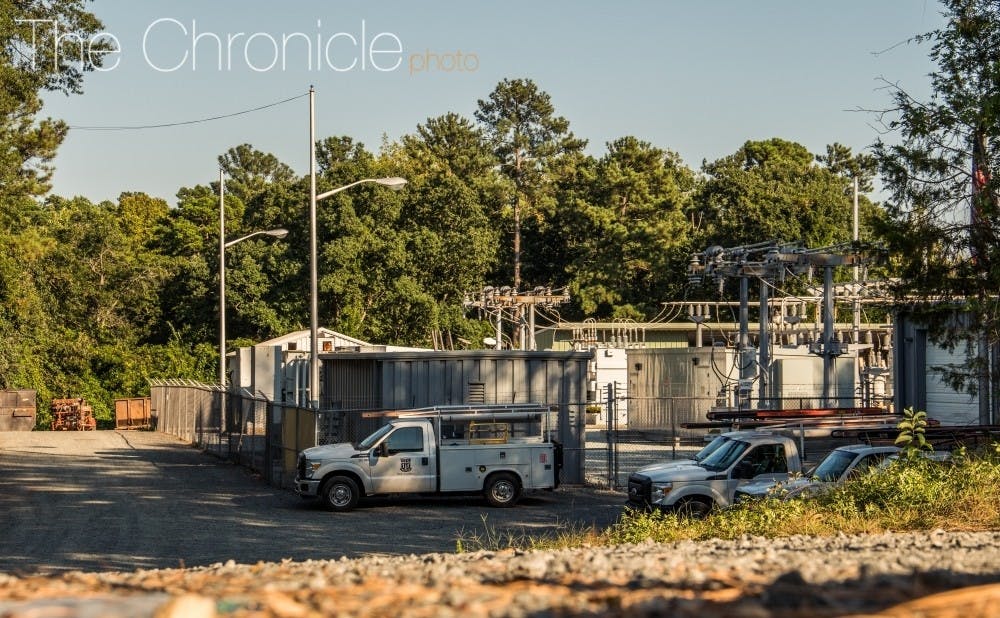A decision on a proposal to build a power plant on campus was postponed in April following a report by a subcommittee of the Campus Sustainability Committee.
Released in April, the report explored the possible alternatives to and consequences of constructing the $55 million combined heat and power plant. Although the subcommittee could not reach a unanimous conclusion whether the plant should be built, it made several recommendations for the University’s consideration.
The report resulted in Duke’s decision not to bring the proposal to the Board of Trustees, and to instead allow deliberations to continue into future semesters.
The postponement came after months of debate and pushback from students, faculty and community members who have been concerned about the environmental impact of the plant. Those concerns initially led Duke Energy, which would own and operate the plant, to delay a scheduled hearing on the construction plans from January to late spring.
According to the report, the subcommittee was formed “by choosing representatives from some of the most interested parties and groups,” including students and faculty on both sides of the debate. The subcommittee created a website for online comments, hosted a public forum in March and met weekly throughout the semester to discuss the issue.
In the report, the subcommittee recommended that the University pursue biogas—as opposed to natural gas—as a fuel for the plant.
“The subcommittee appears to be unified in its interest in the potential to power the campus on biogas rather than a fossil-based fuel and was further unified in voicing its encouragement for the University’s pursuit of a biogas fuel source as expeditiously as possible,” the report said.
The subcommittee added that Duke could consider using swine waste from pork production operations in North Carolina as a source of biogas fuel. Because the waste is typically emitted into the atmosphere in the form of methane, harnessing the gas as fuel for a power plant would be a more environment-friendly option. The report noted that “biogas appears to be one of the largest opportunities available to [the University] to cut greenhouse gas emissions” and construction of a biogas-fueled plant “would constitute true climate change leadership.”
However, the infrastructure to provide a steady stream of biogas is not yet in place. This led some members of the subcommittee to recommend a “postponement strategy” that would allow a more in-depth exploration into the feasibility of biogas and the use of both biogas and fossil-based fuels in the interim.
The report said that the plant should be fueled by enough biogas in the first year to render it carbon neutral, with the goal for the plant to rely exclusively on biogas by the five-year mark.
“The subcommittee recommends that the University not move forward with the plant if these biogas objectives cannot be met,” the report said.
Regardless of whether the plant is constructed, the subcommittee added that biogas should remain a viable fuel to be investigated by the University.
The subcommittee also discussed other details about the plant proposal. The report questioned the justification that the plant would serve as a source of backup power in the case of a university blackout, noting that the hospital already contains diesel generators.
Whereas previous calculations had suggested that the plant would reduce greenhouse gas emissions by 47,000 metric tons, the subcommittee also found this number to be exaggerated. After accounting for natural gas leakage and the energy required to power the plant, the report suggested 10,000 metric tons—approximately three percent of campus emissions—as a more accurate figure.
If Duke does decide to build the plant, the report recommended increasing its wattage from 21 to 25 megawatts. This would make the plant subject to the environmental regulations of the Clean Air Act.
In addition, the subcommittee suggested a provision in the contract allowing the University to exit the agreement with Duke Energy after 10 years “should alternative, lower-emitting technology become available.” The Campus Sustainability Committee would then meet after seven years to determine whether such technology has become feasible and make its recommendation.
Still, compared to suggested alternatives like solar power, the report found that the combined heat and power plant is the more cost-efficient option. A subgroup of the subcommittee—called the Alternatives Group—concluded that other possible options “would cost more than the CHP proposal to achieve the same level of needed services identified by the Duke Administration.” Those services include providing for the University's current and future steam and electricity needs.
The subcommittee also agreed that a combined heat and power plant would increase energy production efficiency by about 50 to 80 percent.
The report made several broad recommendations for similar projects in the future. It cautioned the University against making announcements about large projects during summer or winter breaks, as the plant proposal was first announced in May 2016 after the end of the Spring semester. The subcommittee also encouraged the University to bring such proposals to the Campus Sustainability Committee at an earlier stage so that more input could be obtained from stakeholders.
It also urged Duke to renovate buildings using the most power and to pursue solar-powered facilities with more interest.
“The Subcommittee is in strong agreement that addressing climate change and minimizing greenhouse gas emissions is and must remain an institutional priority,” the report said. “Furthermore, it is unanimous in its conviction that Duke University should be a leader in taking steps to mitigate greenhouse gas emissions.”
Get The Chronicle straight to your inbox
Signup for our weekly newsletter. Cancel at any time.

